What color of the wallpaper increases the room space. Expand the space. Interior design rules
Our life is what we see daily, what surrounds us. First of all, this is our home. Therefore, it is so important to live in a beautiful and properly arranged space. Designers in the interior well know about it. However, these knowledge are increasingly becoming public domain. Today, we will talk about some of the rules of interior design experts today.
Style and color in the interior
First of all, determine for yourself the functional needs of your family, after which, try to conditionally divide the apartment on the zones where you sleep, work, cook and eat, take a bath. Think what style is closer to you, for this, extract interior logs. Something will surely please the eye and will seem achievable.
It is very important to understand what color scheme will become most comfortable and pleasant to you. To do this, it is worth listening to your inner state. Think what color is your color.
From the main color and accents in the interior will depend on your mood and well-being. And if the accents can be quickly changed, it will make it harder with the color of the walls. That is why many prefer bright, beige tones. A number of features in the choice of color are individual for different psychotypes. For example, it is known that the red color excites. But if a choler's long stay in the Red Living Room can lead to overstrain, then on a relaxed melancholic, it can have a positive "invigorating" effect.
With respect to colorful experiments with a floor, designers warn: the blue color and all its shades under their feet do not have a long stay in the room, although it seems big and spacious, and yellow makes a dwelling free and sunny, but visually does not give the feeling of reliable support.
Expand the space
Pay attention to the housing configuration, its problem areas. Enlarge viewing space will help mirror and glossy surfaces, light tones, or on the contradiction. It all depends on the dosage and combination.
The classic techniques for creating optical illusions include, for example, creating a suspended ceiling and using lights in the upper area of \u200b\u200bthe room - it helps to visually increase the height of the room. The same effect can be achieved by painting the floor into a rich color or covering it with varnish, and also if you break the wallpaper with a large pattern, contrasting to the main background.
You can visually push the walls using the color opposition of vertical and horizontal enclosing planes, as well as with the "stalking" of contrasting textures. The feeling of greater space in a small room will arise if used in trim light cool tones - shades of gray-blue, pearl, pale green. If the room, on the contrary, is very spacious, it will be suitable pastel or rich tones of warm gamma.
The change in the perception of space is extremely promoted by the texture of finishing materials and interior items. For example, horizontal strips visually stretch the room, creating an effect of an increase in area, but with a simultaneous decrease in its height. Vertical, on the contrary, visually squeeze the horizontal space, increasing it in height.
Play with space
Here are some techniques that will help you visually increase the space. Suppose, there is an elongated narrow room. You can turn it into a square using mirrors. Along the long wall at a certain interval (step), we have a mirror for the entire height, from the floor to the ceiling. So it will seem that something else is behind the wall of a narrow room. The "Looking Gala" visually will increase the width of the room.
Another reception: Conditionally divided the room into two zones and have mirrors, elongated, vertical, opposite each other, mounting them on long walls on the border of the transition of one zone to another, thereby breaking visually space. So we get two zones of square shape, and one of them can and deploy in the opposite direction, since the mirrors will give us the effect of infinity. In general, any items with a mirror or glossy surface will also create an effect of an increase in space due to reflective surfaces.
In order to visually increase the height of the ceiling, you can apply a graphic move - for example, using a vertical strip on the wallpaper, or to paint it in color in the drawing, saturated and contrast relative to the background main tone. Or you can create the effect of windows, reagreeing the narrow vertical niches with matte glass from the floor to the ceiling, followed by the backlight. Such vertical light "windows" will pull out our room visually in height, and if you use glossy floor or ceiling coatings, then this effect will increase by reflection on the adjacent surfaces. Any graphic vertical, lamp, narrow and high, will also help solve this task.
Hidden reserves
Often, the inhabitants of the house want more "air" in the interior. But on the other hand, you need to put things somewhere. Fortunately, for a professional designer, two of these tasks are not mutually exclusive. Today is relevant hidden placement of items and equipment. Thus, the purity of lines is preserved, there is a feeling of free space. This is achieved with niches and built-in wardrobes, dressing rooms. Storage systems can be completely hidden from prying eyes, issuing the door of embedded storages equally with the rest of the wall. In some cases, on the contrary, the door canvas deliberately allocate, turning into an additional accessory or even into a work of art, for example, with the help of frescoes.
The light interior with an abundance of both natural and artificial light visually increases space.
How to visually increase the room - this is what every third resident of our country thought about. Have your own corner, not a removable apartment, dream all. And if you are lucky to get your own apartment, it does not matter what size it is and parameters. IN modern world fix any planning errors It is possible with minimal costs, simply applying those or other means of decor.
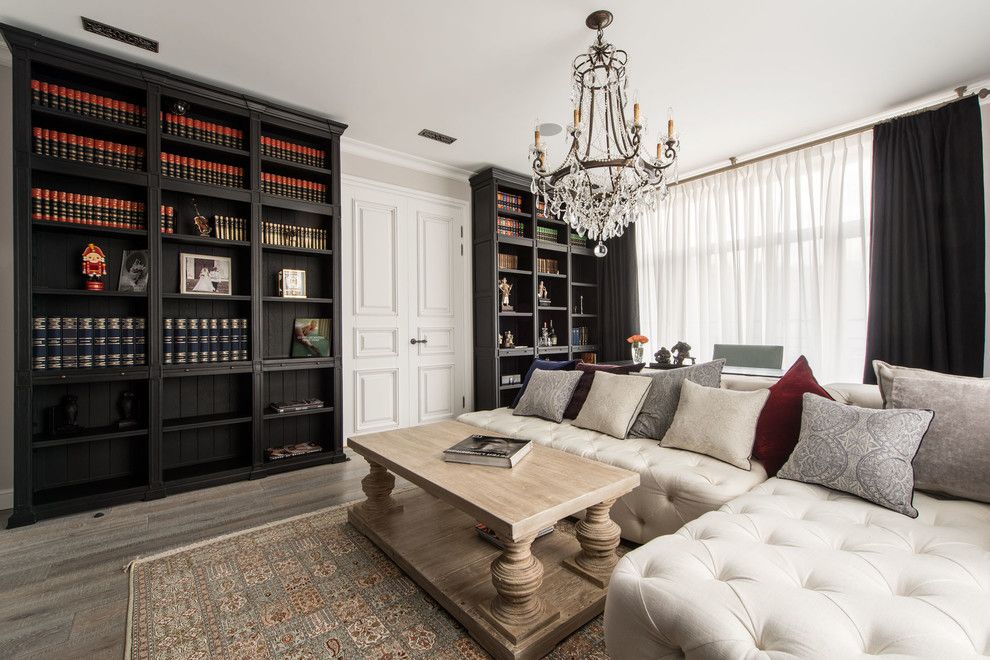
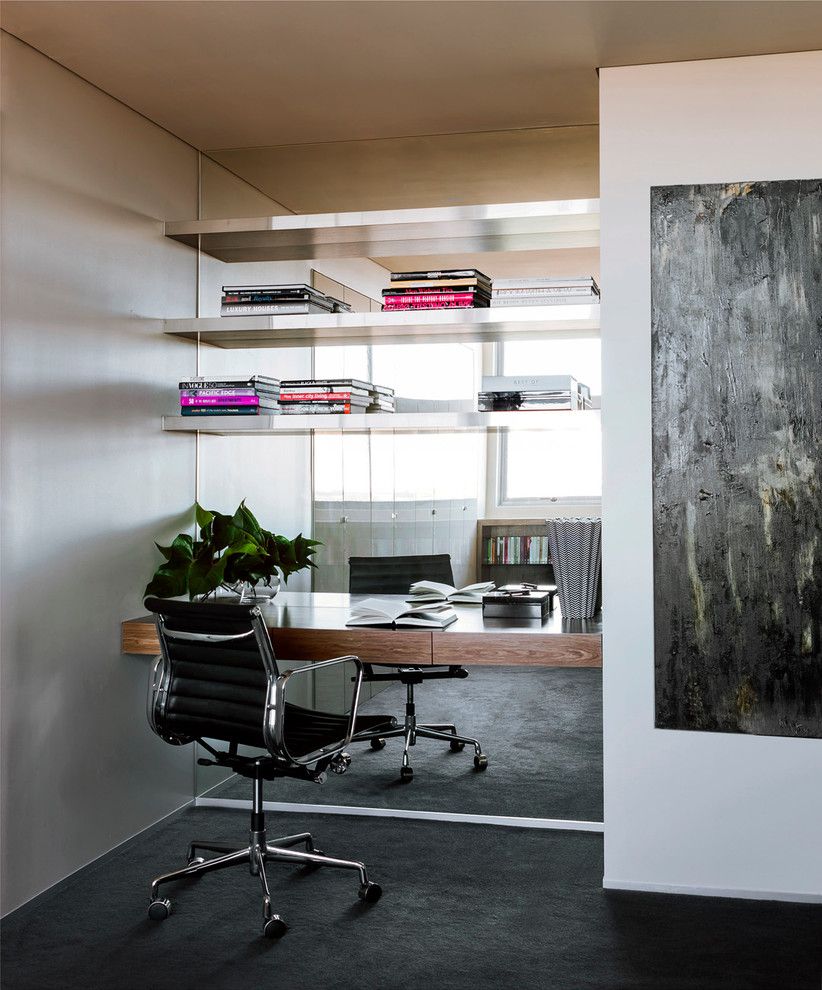
How to visually increase the room? In fact, this is not so difficult. In order to expand, lengthen or pull out the room, a very small amount of money is needed and their intelligent application. Of course, it is possible to expand the space in the room by removing the partitions, but these are cardinal measures. We will advise you how to make it more humane. The basic principles of creating visual space in the decor include:
- Color and optical illusions game.
- And other prints on the walls can visually both lengthen and narrow the room.
- Mirrors or glossy surfacessignificantly expand, if necessary, space. But they should be approached very responsibly and carefully. After all, it is important not to overdo it. An abundance of reflective funds can create discomfort among people present in the room.
- Game light and shadow.
- Furniture and its correct location.
- Decor elements.
To achieve the desired goal, you can apply separately any of these methods or combine them among themselves.


Wallpapers and Rooms for Rooms
Wallpapers are perhaps one of the most accessible ways to expand the space of the room. But not everyone knows about how visually correctly. The first thing to pay attention is to draw - this is a drawing. He can play a cruel joke if you do not know how to choose it. It is important to remember several rules:
- The strip or other pattern is characterized by its thickness, diameter, as well as the distance between them. Very thick lines can cause the opposite effect of whom you wanted to achieve. Thin lines will not only help make the room above, but, at the right application, the walls visually spread. Too major drawings are able to significantly reduce the space.
1. Color
When choosing a color gamut for the interior, do not forget about the ability of white and pastel shades to increase the space, and bright and contrasting reduce. At the same time, cold colors give depth, and warm, on the contrary, approach.

2. Light
Pay attention to the light. Well lit rooms visually always seem spacious. You can control this effect by adjusting the intensity. The most pleasant is sunlight, so rooms with lots of windows always look more advantageous.
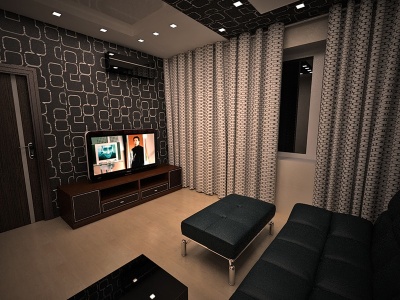

3 things
Remember - things always limit space. Strive to minimize the favor in your room of unnecessary items, you will see how the room will expand. Avoid using large things in small rooms - a large sofa or a closet absorb space.
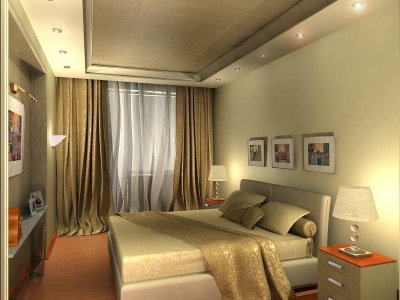
4. Gloss
It is important to comply with color harmony on the ceiling, walls and field. Experiment with the type of decorative finish, and not with a tinge, giving preference to the bright gamma. For example, brilliant, and not matte floor covering increases the small room, as well as a pearl and gloss on the ceiling.
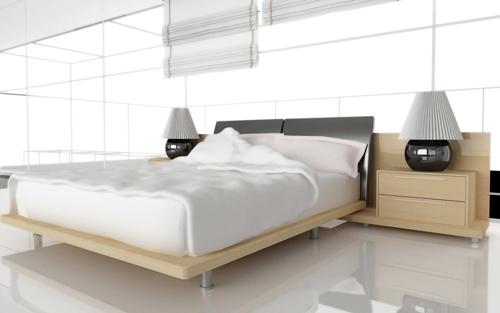
5. Mirrors
Mirrors significantly expand the space. If you have a mirror plate on the wall, your room will double. You can use the usual large mirror. Located at the right angle, it will reflect not only interior items, but still light and color.
![]()
Many underestimate the help of correctly selected pictures in expanding space. One big image makes the room more spacious, and many small - on the contrary. Light, deep tones of painting and the plot itself are very important. For example, in a room where little natural light can be a story image of a well-lit window.
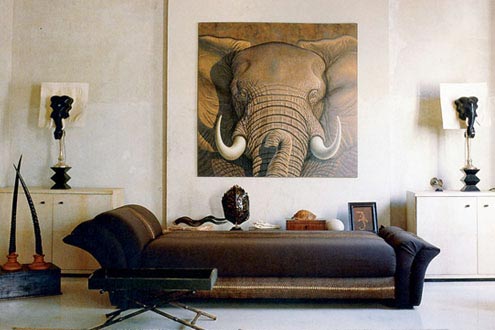
7. Furniture
Working out the interior design, remember the compact furniture - the folding table, the built-in wardrobes and beds, as well as furniture made of glass and furniture with a mirror effect reflecting the light. Furniture with open racks always expands the space, and the deaf sash limit it. It is important not to overload the shelves with decorative trifles. Give the advantage of low furniture (Purphifs, Tabretam), not "eating" the perspective and the area of \u200b\u200bthe wall.
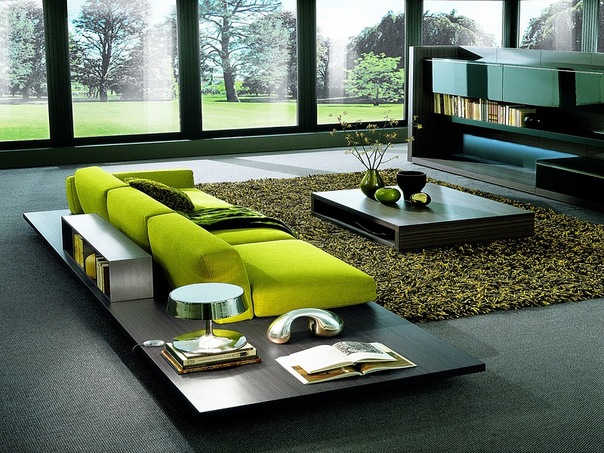
8. Details
Many bright details - not for small rooms. They share a room for separate zones, crushing attention. An exception is one bright subject (vase, flower, floor lamp), delivered to the farthest entrance door corner of the room.
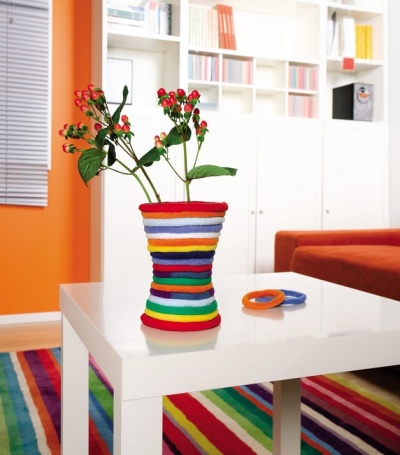
9. Geometry
The layout of furniture in the center of the room always reduces it, and along the walls increases. If it seems to you boring, take the corners, then the center of your room is free and open space.
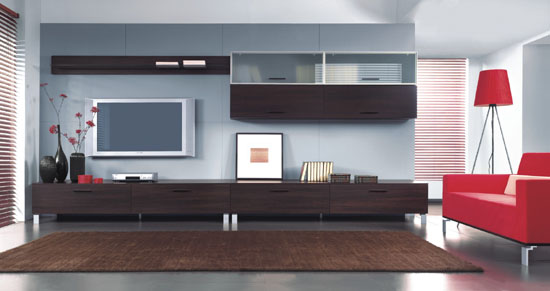
10. Curtains
An important detail of a properly selected interior for small rooms is light curtains. Heavy curtains of dark tones invariably narrow the area. The same effect is provided by large patterns, but light fabrics and fabrics with small pattern are expanding the room.


Remember these uncomplicated tips - with their help, any room can be made more spacious and comfortable.
If you decide to expand the space of your apartment, sometimes it is simply impossible to break or move the walls. Besides physical methods Changes in the home of the house there are design solutions that can change the perception of visual space. Thus, it is possible to "expand" walls without destruction - for example, with the help of optical illusions.
The room can be visually deepened, narrowed, extended, increased or reduced. The space can be changed using the color and the main elements of the interior, as well as the distribution of lamps and accounting the direction of light.
Illusion of color
Color and color combinations are an extremely efficient and multifaceted tool that allows you to visually change the space in all three dimensions.
For example, "expand" the walls of a small room can be used with cold tones - gray-blue, pearl, pale green. If the room is too big, then for her good pastel and deep warm colors.
Traditionally, dark colors make the room less and the ceilings below, and light visually expand the space and the room seems wider, the ceilings are higher.
![]()
Colors visually expanding space: White, beige-orange, yellow, cold blue, blue, cold blue-green.
Colors that create the effect of reducing space: Black, dark brown, blue-green, blue-purple, rich red, yellow-red, orange-red, warm red.
There are also neutral colors that do not change the perception of space: Gray, purple red, green.
Visually to expand the space can a total color gamut living room, kitchen and dining room. The color of the floors and walls should be the same as the main color of the room. For greater space, the main rooms must be in bright and warm colors. In addition, the effect of greater height is achieved by painting the floor with saturated colors. Red and all its shades effectively distinguish horizontal lines and planes. Blue and all its shades on the floor do not have a long stay in the room, but they make it more and wider. Yellow and all his shades on the floor will make the room solar, but the light color visually does not give a stable foot support.
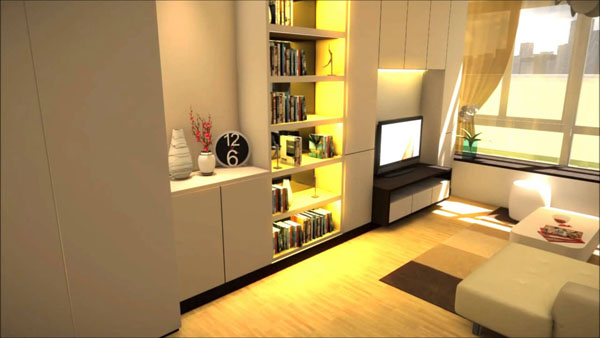
Illusion texture
Another point, which also contributes to the change in space - the texture of finishing materials and interior items.
For example, horizontal lines visually stretch space, creating an effect of magnification, but at the same time lower it. Vertical lines, on the contrary, narrow space, visually increasing its height.
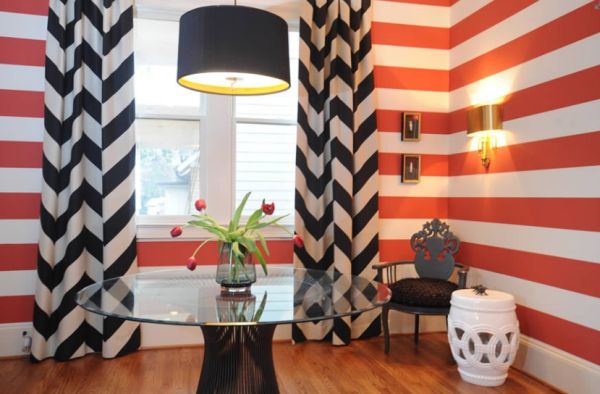

Small decor elements visually make room wider, one big - less. Also, large drawings are reduced, and small increases space.
White items on a dark background visually make space more, expanding and lengthening it. Checkered, striped or replenished patterns. Plots seem more than one-photon equal in size.
The effect of greater height is achieved by finishing materials with glossy polishing, as well as floors with a large pattern of contrasting color.
Illusion of light
When using optical illusions for visual correction of space, a significant effect is achieved due to the correct use of light (changes in the brightness of individual sections of the room).
The effect of visual increase in the height of the room is performed using the ceiling decoration with built-in luminaires. In addition, you can do it using suspended ceilings, mirroring glass, upper room lighting, or by creating a shiny surface.
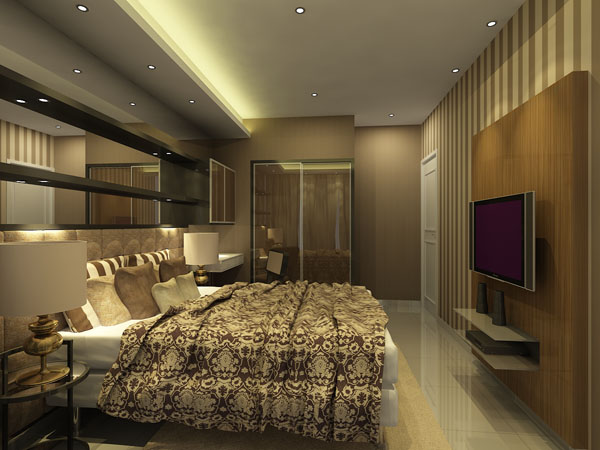
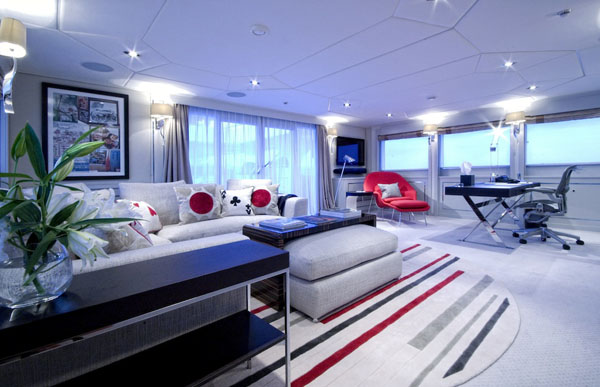
In general, if your ceiling is low, it is better to abandon massive chandeliers, giving preference to small.
You can evenly illuminate the walls and bottom corners of the room with small lamps. In this case, it will be visually wider. If the space should be narrowed, it is necessary to illuminate the upper corners.
So that the width of the rectangular room seemed more, it is necessary to evenly illuminate three walls, and the longest fourth wall is darkened.
Mirror illusion
The mirror is a great way to expand the space room. This effect is created due to the optical reflection and elements of the room decor.

Experiments with mirrors and mirrored surfaces are justified in small rooms. The mirror can "push the walls, disrupt the straightness of the lines, and will make you forget about real proportions. Ease is also created by glass furniture surfaces - it visually makes it easier and "dissolves". Mirror ceilings are best expanding the space, infinitely increasing the height. Large mirrors will make any room anymore.


